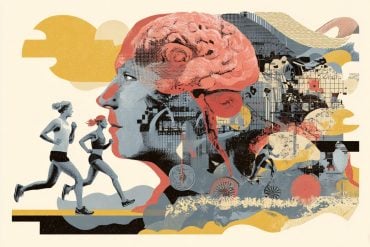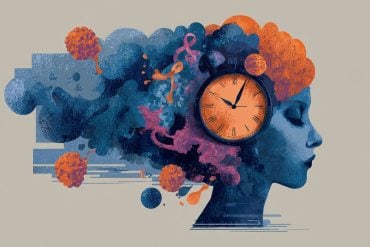Summary: A new study introduces a novel approach to combat addiction by using Eye Movement Desensitization Reprocessing (EMDR) to alter the vivid imagery associated with addiction memories. This innovative therapy, coupled with cognitive behavioral therapy, shows promise in significantly reducing cravings and negative thought patterns in substance use disorders.
The research highlights EMDR’s effectiveness in lessening the intensity of addiction-related imagery, leading to a decrease in cravings and irrational cognitions.
These findings open a new avenue in addiction treatment, potentially lowering the high relapse rates seen in conventional therapies.
Key Facts:
- The study utilized EMDR to target and transform the vivid imagery that fuels addiction cravings.
- EMDR proved equally effective as cognitive behavioral therapy in reducing cravings, with enhanced results when used in combination.
- The therapy not only addresses chemical dependencies but also extends to compulsive behaviors such as Internet addiction and gambling.
Source: FAU
In 2021, 61.2 million Americans ages 12 and older used illicit drugs and more than 106,000 died from drug-involved overuse. Florida ranks second to California, with 5,300 annual overdose deaths, outpacing the national average by about 23 percent. Excessive alcohol use is the leading cause of preventable death in the United States and is associated with numerous health issues, including heart disease, cancer and poor mental health.
Although individuals with substance use disorder use outpatient sober support services and resources, relapse rates are still as high as 70 percent, indicating a need for more treatment modalities.
A new Florida Atlantic University pilot study is showing promise in treating addiction cravings by combining eye movements and guided instructions to process memories. The evidence-based therapy – Eye Movement Desensitization Reprocessing (EMDR) – has proven to be effective in treating PTSD, depression, anxiety and other mental health conditions. However, research exploring this method for substance use disorder is sparse.
Since cravings are maintained and heightened by sensory imagery stored in memories, with more vivid imagery predicting higher craving intensity, one of the goals of the FAU study was to transform dysfunctional memories stored in the brain through processing and integration. Addiction memory, assumed to be episodic, resembles the maladaptive traumatic memory formation commonly seen in post-traumatic stress disorder.
“Because Eye Movement Desensitization Reprocessing has been shown to reduce the vividness of negative memories associated with trauma, we anticipated that this therapy would also reduce the vivid imagery that fuels addiction cravings,” said Elizabeth Woodruff, first author, a graduate of the Phyllis and Harvey Sandler School of Social Work within FAU’s College of Social Work and Criminal Justice, and a practicing clinical therapist in West Palm Beach.
“This method accesses trauma events in very specific ways to reprocess what the individual remembers from the negative event to ‘repair’ the mental injury from that memory.”
FAU’s “Addiction-focused Eye Movement Desensitization Reprocessing” study focused on cravings, perseverative thoughts (repetitive negative thinking), and irrational cognitions about the substance of choice.
For the study, researchers tested Addiction-focused EMDR with and without cognitive behavioral therapy, a psycho-social intervention aimed to reduce symptoms of various mental health conditions including depression and anxiety disorders.
Results of the study, published in the Journal of Evidence-based Social Work, showed a significantly high participant retention rate (nearly 100 percent). Addiction-focused EMDR was as effective as cognitive behavioral therapy for cravings with the combination of both resulting in more reduction in craving than cognitive behavioral therapy alone.
Both groups (experimental group and control group using only cognitive behavioral therapy) had clinically significant reductions in cravings, perseverative thoughts, and irrational cognitions, with the experimental group showing greater decreases overall.
“While the purpose of our pilot study was to test Addiction-focused Eye Movement Desensitization Reprocessing on chemical addiction cravings, our findings indicate that it also can be highly effective with issues that are not chemical but rather compulsory in nature, such as Internet addiction and gambling.
“However, more randomized control trials are necessary to confirm our findings and develop a transparent understanding of the number of sessions needed to cultivate statically significant outcomes that are replicable for future studies,” said JuYoung Park, Ph.D., second author and a professor in FAU’s Phyllis and Harvey Sandler School of Social Work.
“Importantly, this therapy is a valuable add-on to current addiction treatment to address memories that drive addiction cravings, which also impacts maladaptive thought patterns associated with relapse.”
EMDR is an eight-phase intervention: in-depth client history, preparation, assessment, desensitization, installment, body scan, closure and reevaluation.
Participants in the experimental group received 60 minutes of individual cognitive behavioral therapy once a week, followed by Addiction-focused EMDR. Researchers explored past memories of relapse (first, worst, most recent) and cravings (first, worst, most recent) and current triggers. They identified future fears, which were desensitized with Addiction-focused EMDR.
Nearly 57 percent of the study participants reported alcohol as their primary substance dependence and 20 percent reported heroin or other opiates, including morphine, as their primary substance dependence.
Currently, individuals with substance use disorder are encouraged to attend inpatient treatment that employs group therapy to educate patients on addiction, coping skills, and thought-stopping techniques, and cognitive behavioral therapy, along with pharmacological options such as anti-craving drugs.
As perseverative thoughts were found to be an important predictor of relapse, the researchers say findings from their study show that pairing Addiction-focused EMDR with cognitive behavioral therapy, could decrease relapse rates and help people with substance use disorder to maintain long-term recovery in inpatient or even outpatient treatment centers.
Study co-authors are Heather Howard, Ph.D., associate professor; Manny Gonzalez, Ph.D., associate professor; both in FAU’s Phyllis and Harvey Sandler School of Social Work; and Talib Jaber, RPh, vice president of customer success, Sunwave.
About this addiction research news
Author: Gisele Galoustian
Source: FAU
Contact: Gisele Galoustian – FAU
Image: The image is credited to Neuroscience News
Original Research: Closed access.
“Feasibility and Efficacy of Addiction-Focused Eye Movement Desensitization Reprocessing in Adults with Substance Use Disorder” by Elizabeth Woodruff et al. Journal of Evidence-Based Social Work
Abstract
Feasibility and Efficacy of Addiction-Focused Eye Movement Desensitization Reprocessing in Adults with Substance Use Disorder
Purpose
Addiction-focused eye movement desensitization reprocessing (AF-EMDR) is a viable add-on therapy to treat memories that drive addiction cravings. However, little research has explored AF-EMDR and its effects in people with substance abuse disorder (SUD). The purposes of this study were to determine the feasibility of conducting AF-EMDR and to test the preliminary efficacy of AF-EMDR on overall cravings experienced by persons with SUD, craving, perseverations associated with addiction, and irrational cognitions related to addiction.
Methods
This pilot study used a two-arm randomized controlled trial (RCT) design with an experimental group (AF-EMDR + cognitive behavioral therapy [CBT]) and a control group (CBT Only). Thirty participants were recruited from a residential program or a partial hospitalization program in a recovery center in Florida, from October 2021 through January 2022 and randomly assigned to the experimental group (n = 15) or the control group (n = 15).
Results
All participants adhered to the four-session 60-min AF-EMDR intervention and post-intervention data collection; 98.33% completed all four sessions. Results indicated significant reductions in cravings, perseverative thoughts about substance of choice, and irrational cognitions among participants in both the experimental (AF-EMDR + CBT) and control (CBT Only) groups during the intervention; however, there was no significant difference between groups.
Conclusions
The results showed positive trends in decreasing craving. However, more clinical trials with a larger sample are necessary to assess the efficacy and sustainability of such effects in persons with SUD.








